Sacred Regalia Of Japanese Emperor: Sword, Mirror And Jewel In Ancient Japanese Tradition
A. Sutherland - AncientPages.com - Many important symbols can be found in Japanese people's early cultural beliefs, religious tradition and imperial myths.
The country’s most sacred objects are the regalia of the Japanese emperor and symbols of his divine sovereignty. They are also known as the "Three Sacred Treasures of Japan").
Left: The sword ‘kusanagi ‘ has never actually been seen, however, it could have actually looked like one of these. Right: Susanoo (Susano-O), the god of the seas, storms, and also the ruler of the Yomi, the underworld.
They are the sacred sword (kusanagi), the mirror (yata no kagami), and the comma-shaped jewels (yasakani no magatama), symbolizing the imperial qualities of valor (the sword), wisdom (the mirror), and benevolence (the jewel).
These relics, along with several others were once used in Shinto rituals as offerings to the gods.
Kept as family treasures, they traditionally passed down from one generation to another. As their owners, people believed that the relics grant them power.
See also:
Mystery Of The Kusanagi Treasure: The Legendary Sword
Shinobi No Mono: The Shadow Warriors And Hattori ‘The Demon’ Hanzo Of Ancient Japan
Once in the possession of the emperor, these three treasures acquired a special sanctity and they have never been on display to the general public. Ancient Japanese tradition required that the Shinto priests presented the relics during the ascension of a new Emperor to the throne.
Left: The sun goddess Amaterasu is said to have brought order to Japan after its creation through a cosmic union of male and female great spirits (kami); Right: Emperor Jimmu was the first emperor of Japan and a direct descendant of the sun goddess, Amaterasu
The last time, they were used during the accession and enthronement of Emperor Akihito in 1989 and 1993, but they were shrouded in packages.
It is said there are no known photographs or drawings of them. However, the sword’s replica is believed to be kept at Atsuta Shrine in Nagoya, the jewel at The Imperial Palace in Tokyo, and the mirror in the Grand Shrine of Ise.
Many ancient Shinto myths ascribed divine origins to these relics because they come from the sun goddess Amaterasu.
According to Shinto legend, they served as a sign of their direct connection to the gods, and they were brought to Earth by legendary ancestor of the Japanese imperial line (Ninigi-no-Mikoto), when his grandmother, the sun goddess Amaterasu, sent him to pacify Japan.
Artist's impression of the Imperial Regalia of Japan
The treasures were eventually said to be passed down to Emperor Jimmu, who was the first Emperor of Japan.
The sword was discovered inside the body of a many headed snake, slain by Susano-O, the Shinto god of the sea and storms, a powerful, gigantic humanoid, after a terrible contest.
He presented the sword to his sister, the sun-goddess Amaterasu, an ancestress of the imperial family. The mirror and the jewels were hung on a tree to attract the sun- goddess from her cave. People believe the spirit of Amaterasu is present in the mirror, endowing it with great "kami", spirits or phenomena that are worshipped in the religion of Shinto.
They can be elements of the landscape, powerful forces of nature, as well as beings and the qualities that these beings express.
Written by – A. Sutherland AncientPages.com Staff Writer
Copyright © AncientPages.com All rights reserved. This material may not be published, broadcast, rewritten or redistributed in whole or part without the express written permission of AncientPages.com
More From Ancient Pages
-
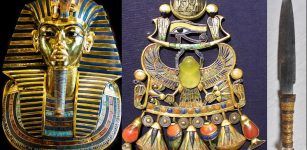 King Tut’s Cosmic Scarab Brooch And Dagger Linked To Meteorite’s Crash 28 Million Years Ago
Artifacts | Jun 17, 2021
King Tut’s Cosmic Scarab Brooch And Dagger Linked To Meteorite’s Crash 28 Million Years Ago
Artifacts | Jun 17, 2021 -
 Unusual Carved Stone Pillar With ‘Special Powers’ Discovered In Canada Confirmed Authentic Indigenous Artifact
Archaeology | Jan 29, 2021
Unusual Carved Stone Pillar With ‘Special Powers’ Discovered In Canada Confirmed Authentic Indigenous Artifact
Archaeology | Jan 29, 2021 -
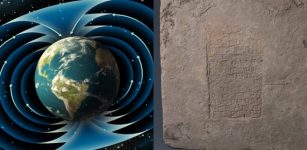 Mysterious Anomaly In Earth’s Magnetic Field Documented On 3,000-Year-Old Mesopotamian Bricks
Archaeology | Dec 18, 2023
Mysterious Anomaly In Earth’s Magnetic Field Documented On 3,000-Year-Old Mesopotamian Bricks
Archaeology | Dec 18, 2023 -
 How Norwegians Expressed Resistance Against Nazi Occupation Using Christmas Cards
Featured Stories | Dec 21, 2023
How Norwegians Expressed Resistance Against Nazi Occupation Using Christmas Cards
Featured Stories | Dec 21, 2023 -
 Mysterious Underground City In Brazil Could Re-Write Ancient History – Unexplained Artifacts And Skeletons – Part 1
Ancient Mysteries | Jan 23, 2022
Mysterious Underground City In Brazil Could Re-Write Ancient History – Unexplained Artifacts And Skeletons – Part 1
Ancient Mysteries | Jan 23, 2022 -
 On This Day In History: ‘Devil’s Footprints’ Appeared In Devon, England – Feb 8/9, 1855
News | Feb 8, 2017
On This Day In History: ‘Devil’s Footprints’ Appeared In Devon, England – Feb 8/9, 1855
News | Feb 8, 2017 -
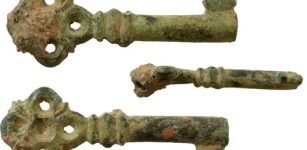 Intriguing Beautiful Medieval Key Discovered In Claverham Village, UK
Artifacts | Oct 10, 2023
Intriguing Beautiful Medieval Key Discovered In Claverham Village, UK
Artifacts | Oct 10, 2023 -
 Incredible Find – 3,000-Year-Old Canoe Found In Wisconsin’s Lake Mendota
Archaeology | Sep 25, 2022
Incredible Find – 3,000-Year-Old Canoe Found In Wisconsin’s Lake Mendota
Archaeology | Sep 25, 2022 -
 Patasola: Hideous One-Legged Female Vampire Who Kills Driven By Hatred In Colombian Folklore
Featured Stories | Jul 26, 2019
Patasola: Hideous One-Legged Female Vampire Who Kills Driven By Hatred In Colombian Folklore
Featured Stories | Jul 26, 2019 -
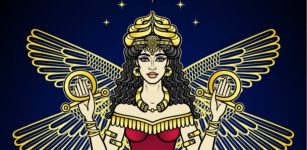 Inanna – Prominent And Highly Honored Mesopotamian Goddess
Featured Stories | May 31, 2021
Inanna – Prominent And Highly Honored Mesopotamian Goddess
Featured Stories | May 31, 2021 -
 Mysterious Advanced Underground Civilization And A Secret Society – Dangerous Knowledge And Verdict – Part 3
Ancient Mysteries | Apr 24, 2018
Mysterious Advanced Underground Civilization And A Secret Society – Dangerous Knowledge And Verdict – Part 3
Ancient Mysteries | Apr 24, 2018 -
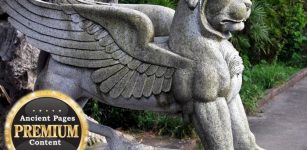 Strange Ancient Mechanical Flying Animals – Myths Or Advanced Ancient Technology? – Part 1
Ancient Mysteries | Mar 25, 2020
Strange Ancient Mechanical Flying Animals – Myths Or Advanced Ancient Technology? – Part 1
Ancient Mysteries | Mar 25, 2020 -
 On This Day In History: Famous Inventor Thomas Edison Died – On Oct 18, 1931
News | Oct 18, 2016
On This Day In History: Famous Inventor Thomas Edison Died – On Oct 18, 1931
News | Oct 18, 2016 -
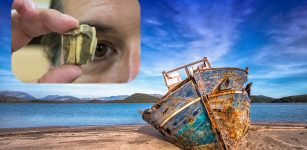 Oldest DNA From Domesticated American Horse Solves An Legendary Shipwreck Mystery
Archaeology | Jul 27, 2022
Oldest DNA From Domesticated American Horse Solves An Legendary Shipwreck Mystery
Archaeology | Jul 27, 2022 -
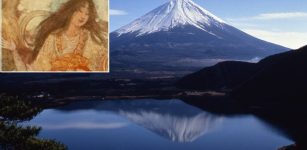 Towering Sacred Mt. Fuji: Abode Of The Immortals In Ancient Japanese Beliefs
Featured Stories | Feb 23, 2017
Towering Sacred Mt. Fuji: Abode Of The Immortals In Ancient Japanese Beliefs
Featured Stories | Feb 23, 2017 -
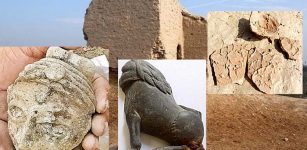 Buddhist ‘Dillu Roy’ Resembles Mohenjo Daro And Harappa And Now Unveils Its Ancient Secrets
Archaeology | Aug 25, 2020
Buddhist ‘Dillu Roy’ Resembles Mohenjo Daro And Harappa And Now Unveils Its Ancient Secrets
Archaeology | Aug 25, 2020 -
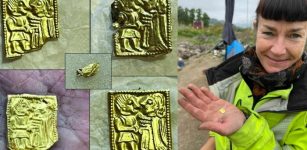 Mysterious Tiny 1,400-Year-Old Gold Foil Figures Found In Pagan Temple
Archaeology | Sep 23, 2023
Mysterious Tiny 1,400-Year-Old Gold Foil Figures Found In Pagan Temple
Archaeology | Sep 23, 2023 -
 Why Did We Abandon Roman Numerals?
Ancient History Facts | Apr 25, 2019
Why Did We Abandon Roman Numerals?
Ancient History Facts | Apr 25, 2019 -
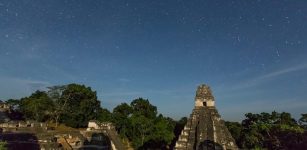 Ancient Maya Astronomers Predicted Meteor Showers 2 Millennia Ago – Mayan Hieroglyphic Inscriptions Reveal
Archaeology | Sep 12, 2017
Ancient Maya Astronomers Predicted Meteor Showers 2 Millennia Ago – Mayan Hieroglyphic Inscriptions Reveal
Archaeology | Sep 12, 2017 -
 Ancient Egyptian Visual Depiction Of The Milky Way Discovered
Archaeoastronomy | May 2, 2025
Ancient Egyptian Visual Depiction Of The Milky Way Discovered
Archaeoastronomy | May 2, 2025



